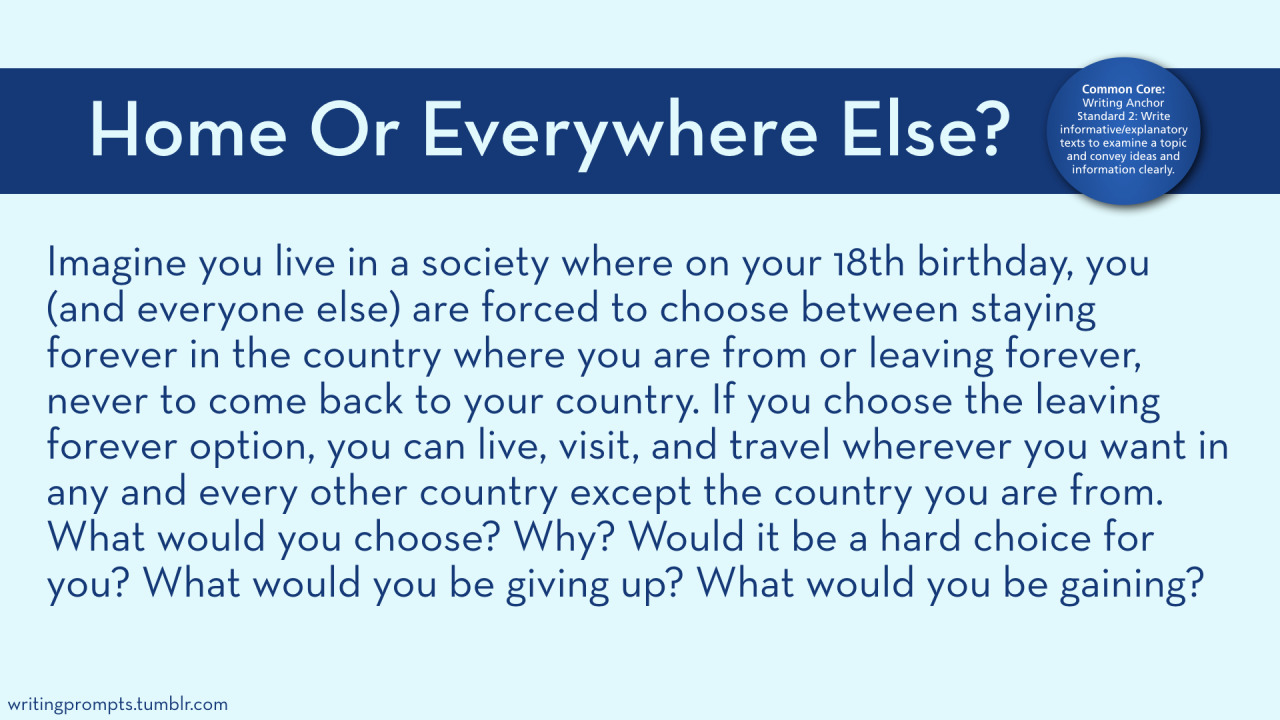August 8, 2019
Standards:
CCSS.ELA-LITERACY.RL.9-10.4
Determine the meaning of words and phrases as they are used in the text, including figurative and connotative meanings; analyze the cumulative impact of specific word choices on meaning and tone (e.g., how the language evokes a sense of time and place; how it sets a formal or informal tone).
Determine the meaning of words and phrases as they are used in the text, including figurative and connotative meanings; analyze the cumulative impact of specific word choices on meaning and tone (e.g., how the language evokes a sense of time and place; how it sets a formal or informal tone).
W.9-10.3 Write narratives to develop real or imagined experiences or events using effective technique, well-chosen details, and well-structured event sequences.
Obj: I can create narratives using figurative language.
Starter:
Free Write Friday
Write without stopping for the next five minutes.
See what you come up with.
If you are stuck, use the prompt below.

Vocabulary:
Word: Connotation
Part of Speech: Noun
Dictionary Definition: an idea or feeling that a word invokes in addition to its literal or primary meaning.
Your Definition:
Activity: Words
Watch the video and complete the instructions given.

Activity:
1. House on Mango Street Pages 3-16
As a class, we will read pages 3-16.
For each story pay attention to the connotation of words.
How does it impact the meaning of the stories?
How does Cisneros use descriptive language in her story?
2. One Pager
Select one vignette that we read together.
You will create a one pager based on the story you selected.
Requirements
Name of Story
Summary
2 Quotes that are powerful and explain why.
3 Examples of figurative language and explain what they mean.
1 Visual to represent the ideas in the vignettes.
(Make this colorful and use the entire page!)

Use the link above to review different types of figurative language.
Take Cornell notes on the terms when necessary.
4. House on Mango Street 14-30.
As you read, pay attention to connotation and figurative language.
Identify at least three examples from any of the vignettes read today.
5. Figurative Language Creation
Using the three examples of figurative language that you identified in the vignettes, create three visuals. You may use storyboardthat or draw your creations.
You must include a representation of the quote, the quote, and an explanation of what it means.
Closure:
How confident do you feel identifying figurative language.
Use the learning target to assess yourself.
No comments:
Post a Comment